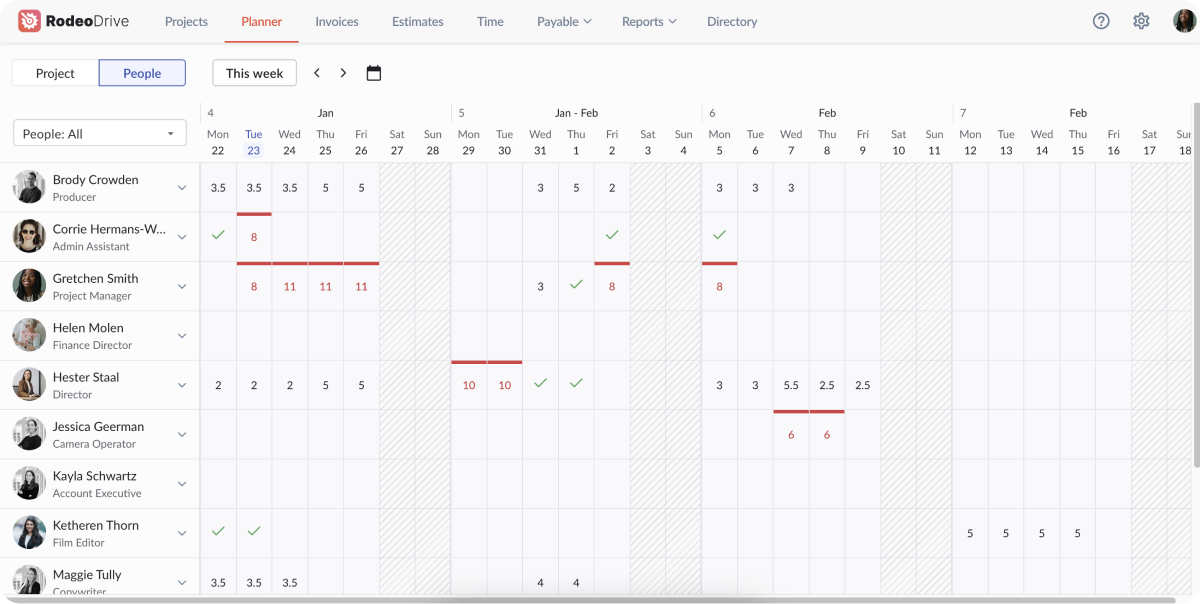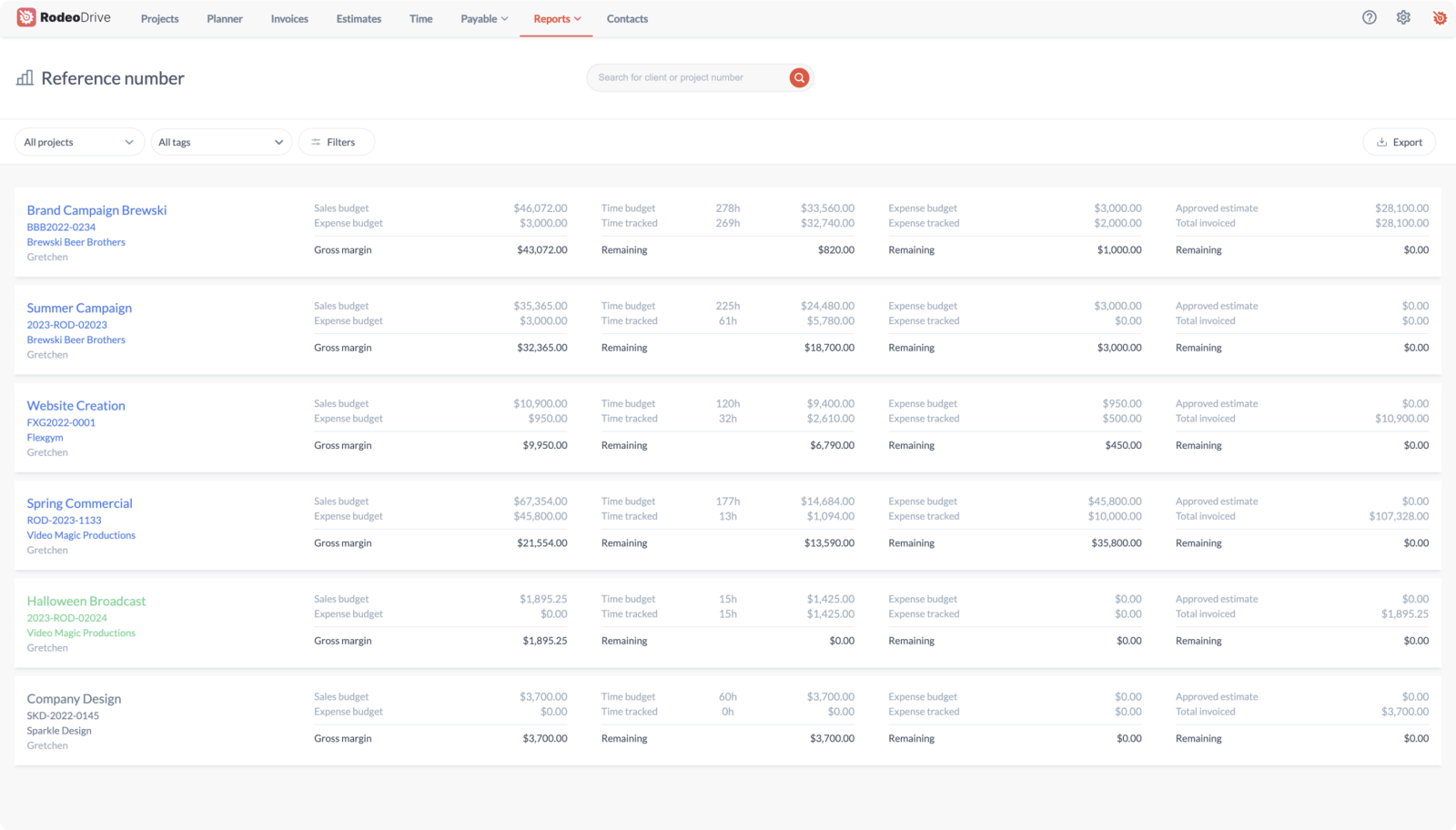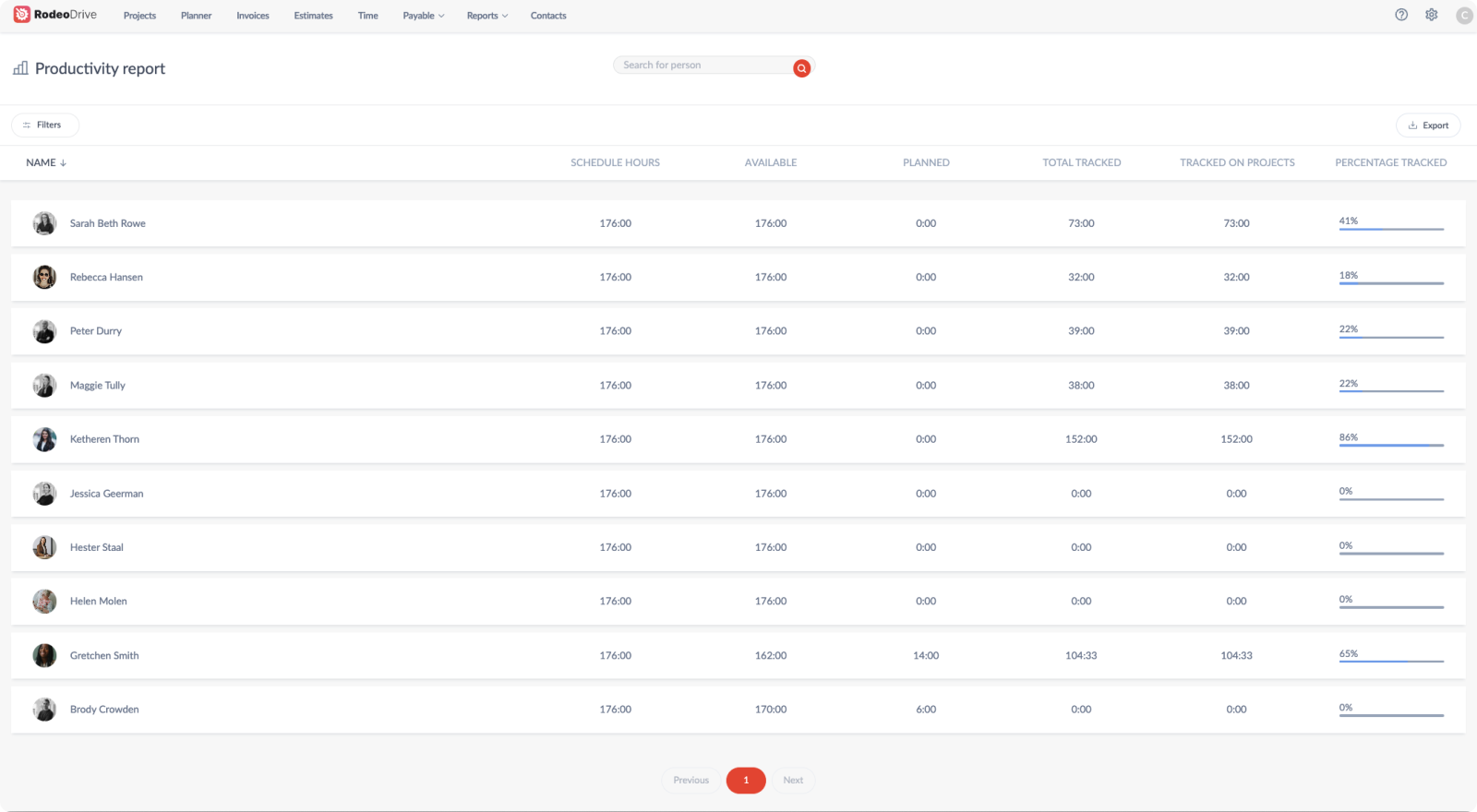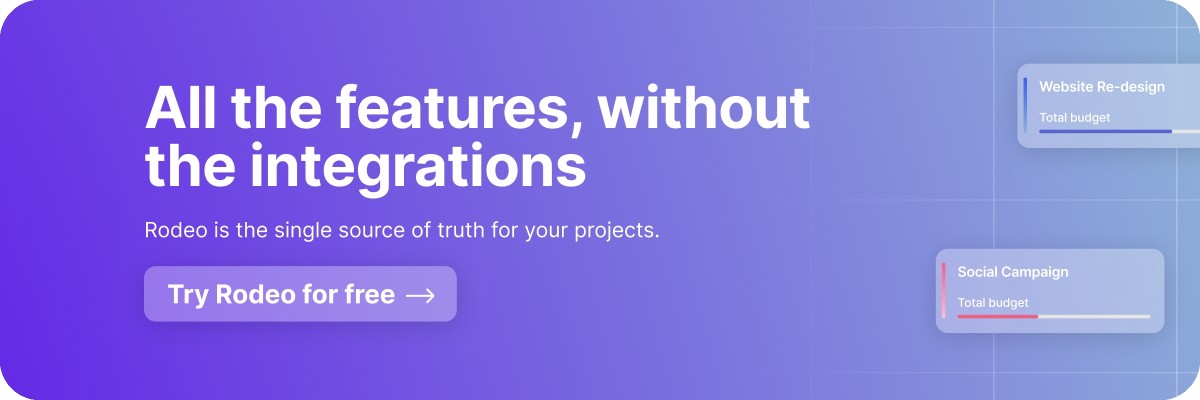A Deep Dive Into How to Write Useful Project Objectives
All project teams need goals to work towards. Otherwise, it’s difficult to create a project plan that results in outcomes the team, client, and stakeholders will be happy with.
But even if your project has an abstract, overarching goal, you’ll need to define measurable objectives that illustrate exactly what your project will achieve in more tangible terms. Fulfilling these objectives will leave you one step closer to completing these larger goals.
In this blog, we’ll walk you through how objectives differ from other project elements and six tips for clearly defining those objectives during your project kickoff.
What are project objectives?
Simply put, project objectives are the aim of your project, outlining exactly what you want your project to achieve. This may include specific project deliverables or other assets your client expects the team to produce, or intangible outcomes like increasing a business’s profitability.
A project might have a sole project objective or several objectives that are important at different stages of the project lifecycle. These desired outcomes help guide your project roadmap, including project planning, execution, and evaluation.
Why is it important to establish project objectives?
Without clearly defined project objectives, your team may struggle to make decisions and understand how to allocate resources most beneficially.
Here are three other benefits of clearly defining your project objectives:
Keep your team focused
Scope creep can easily sneak up on your team if it’s unclear what you’re trying to accomplish. Instead, having clearly defined project objectives will keep your team focused on the intended project outcomes and understand their role in bringing those objectives to life.
Make success measurable
While your project objectives dictate what you ultimately want your project to accomplish, they’re also a great way to track your team’s performance and progress along the way. Your project objectives allow the project manager to easily set up benchmarks to ensure the team is on course for success.
Establish alignment among the entire team
Having clearly defined and documented project objectives creates a sense of purpose, direction, and focus among the entire project team.
By knowing what needs to be accomplished and why it matters, team members can work collaboratively toward common objectives and better understand their role within the project and team dynamic.
Clear objectives also help mitigate misunderstandings or conflicts that might arise from differing interpretations of project goals, fostering a cohesive team environment built on trust and accountability to achieve tangible outcomes.
How are project objectives different from other project elements?
There’s a plethora of different project management terminology, each with seemingly similar meanings. Below, we’ll clear up some common misunderstandings between project objectives and other project components.
Project objectives vs. business objectives
While project objectives are focused on the project at hand, business objectives are much wider in scope, encompassing the overarching goals and strategic priorities of an organization at large.
Business objectives typically reflect achievements that the organization seeks to accomplish to fulfill its broader purpose and drive growth. In contrast, project objectives are specific, measurable goals that relate to individual projects or initiatives undertaken to support the organization's broader business objectives.
In essence, project objectives occur on a much smaller scale, but still contribute to the attainment of business objectives, moving the company forward to long-term success.
Related: Stretch Goals: Definition, Pros, Cons, and Examples
Project objectives vs. project goals
While project objectives focus on specific outcomes and deliverables, project goals define the broader vision or mission that the project aims to fulfill, providing context and motivation for the project team.
While this description may sound similar, project goals tend to reflect the ultimate purpose of the project, often aligning with the organization’s strategic objectives. Project objectives are considered much more measurable and actionable targets that still feed into achieving those larger project goals.
Also read: Goals vs. Objectives: Is There a Difference?
Project objectives vs. project milestones
Project objectives and project milestones are complementary to each other, although not the same thing.
Project objectives define the desired outcomes of the project, whereas milestones mark significant events within the project timeline that indicate progress toward the fulfillment of project objectives. Think of project milestones as checkpoints to assess progress, adjust plans if needed, and celebrate successes.
In other words, your project objectives define your end goals, whereas milestones break the project into stages with benchmarks, allowing your team to better track progress and keep everything on track for the ultimate completion of those objectives.
Project objectives vs. project deliverables
Your project objectives might be abstract, such as increasing a company’s revenue by 30% using an integrated marketing campaign. The question is, how will your team create tangible outcomes that bring them closer to achieving that objective?
This is where project deliverables come in. Deliverables are tangible outputs produced as a result of project activities, directly contributing to the fulfillment of each project objective.
While objectives define the overarching aims of the project, deliverables represent the tangible outcomes or products that demonstrate progress and success in meeting those objectives, which might include a completed report or a software prototype.
Here’s an example of the difference between objectives and deliverables:
Project Objective: Increase online sales revenue by 30% within six months through the implementation of a digital marketing campaign targeting specific customer segments.
Project Deliverable: A comprehensive marketing plan outlining the strategy, tactics, and timeline for the digital marketing campaign, including key performance indicators (KPIs) for tracking progress and success.

6 tips for writing actionable project objectives
Now that we’ve clarified what project objectives are — and what they aren’t — it’s time to get into the nitty-gritty of how to go about writing actionable and effective project objectives.
Let’s take a look at these 6 tips to help you out.
1. Set your project objectives at the very beginning of the project
Failing to set your project objectives at the beginning of the project — during the planning phase — is a surefire way to set your project down the wrong path.
Clearly defining your objectives during the first step of the project planning process helps the project manager build a roadmap that’s in line with what the team wants to achieve and guarantees that the resources will be allocated appropriately when they’re needed.
Plus, you’ll want everyone on the same page from day one of the project. This approach ensures alignment between everyone involved, laying the foundation for a successful project.
2. Double-check that your objectives are connected to project goals
It's crucial to ensure that project objectives directly align with the broader goals and strategic priorities of the organization or client.
For instance, if the overall goal of a project is to create a marketing campaign launching a new product, your objectives should directly contribute to this goal. Perhaps this means your objectives will focus on increasing brand awareness, driving sales, and increasing customer engagement. All three of these objectives would contribute to a successful new product launch.
By drawing connections between your project objectives and these larger organizational goals, it’s easier to demonstrate a project’s value and relevance to stakeholders, easing the process of earning their buy-in and securing the necessary resources.

3. Create SMART project objectives
You might’ve heard of the SMART framework of goal-setting before, which stands for Smart, Measurable, Achievable, Relevant, and Time-bound. Devising SMART project objectives may increase your team’s likelihood of success.
Here’s a bit more insight on how to apply this framework to your project objectives:
- Specific: Defines what needs to be accomplished.
- Measurable: Provides tangible criteria for assessing project progress and success.
- Achievable: Ensures your team can meet these objectives given the project’s resource constraints and the team’s expertise.
- Relevant: Fits within the project’s purpose and the stakeholders’ needs.
- Time-bound: Establishes clear deadlines or milestones for successful completion.
You’ll find that the SMART framework ensures your objectives are realistic, focused, and conducive to effective planning and execution.
4. Be sure that objectives align with stakeholder needs
As part of the relevant portion of the SMART framework, you should’ve already considered how each project objective meets the needs of stakeholders. That said, this is a crucial step and one you shouldn’t cut corners on.
Failing to receive stakeholder approval on your project objectives can have negative consequences. After all, stakeholders often have power over the amount of resources or organizational support your project receives, so it’s important to receive their buy-in and make sure they see the value in your project.
A lack of alignment on project objectives can also lead the way to scope creep, which is when stakeholders ask the project team to take on additional responsibilities and deliverables after the project has begun, which can leave your team with too much on their plate.
The need to consider stakeholder perspectives when crafting your objectives is particularly true in client-facing projects, as executing your project according to objectives they didn’t sign off on may leave them unsatisfied with the results of your project.
5. Assign team ownership over objectives
Objectives are meaningless without the right follow-through. This is why it’s important to assign ownership of project objectives to specific team members to promote team accountability.
This also might be related to each person’s team role, as objectives might naturally be assigned to team members depending on their function within the team. Overall though, encouraging this type of ownership fosters a sense of commitment to achieving these objectives, driving motivation and team performance.
This way, in update meetings with stakeholders, everyone is well-positioned to report updates on progress toward the specific objectives they’re responsible for and field any questions.

6. Document your objectives for future reference
Documenting each project objective is essential for maintaining clarity, consistency, and accountability throughout the project lifecycle. Written documentation provides a reference point for all stakeholders, ensuring that everyone has a shared understanding of the project's objectives and purpose.
Plus, this documentation serves as a guide for decision-making and risk management, equipping the project manager with the right information to make adjustments as needed.
Not to mention, after the project is completed, this documentation will allow future project teams to benefit from your project learnings and create their project objectives based on what worked for your team.
Why is Rodeo Drive the best way to monitor your project objectives?
Setting project objectives is one thing, but completing them is a challenge of its own. It’s even more difficult to ensure your team is on track for success without a project management tool to help.
That’s where Rodeo Drive comes in. Rodeo Drive is a comprehensive project management tool that equips your team with everything you need to see each project objective through to completion.
The platform was built with the needs of creatives in mind, so we take some of the tedious financial management off your plate by automating it for you. You’ll find budgeting, estimating, and invoicing, in addition to expense and purchase order management within the platform.
And that isn’t all. Here are two of Rodeo Drive’s standout features your team will love when monitoring progress toward your project objectives:
Plan your project activities and manage team capacity
Rodeo Drive’s timeline-view planner helps project managers assign new activities and understand each team member’s workload at a glance.
When looking at your planner overview, you’ll see the phases for each project, as well as which activities each team member is scheduled to work on under each phase.

Easily add and assign new project activities on your Rodeo Drive planner
If your team spends more time than budgeted on a task, that over-expenditure will be reflected on the left side of your planner under the activity name, and the number of hours spent will be marked in red. This way, you can immediately identify overspending.
The Rodeo Drive planner also offers a people view, which is designed to keep everyone’s workload capacity balanced. This view enables you to see how many hours each team member is scheduled for on each day of the week, so you can quickly understand who can take on additional tasks. If someone is overscheduled, their hours will show in red.

Rodeo Drive’s people-view planner prevents burnout by balancing workloads
Track your team’s progress with a suite of reports
Because Rodeo Drive centralizes your project finances, we’re able to bring you a complete suite of reports based on your team’s performance.
This includes three reports — Projects, Time, and Productivity — each highlighting a different element of your team's performance. For example, your Projects report is focused on showcasing the financial performance of each project, including your profit margin.

Rodeo Drive’s Projects report provides an at-a-glance look at your spending and profitability
The other reports, Time and Productivity, can be used to better understand how your team is spending their time. You can see which projects they’re tracking time toward, and how much of their time is billable versus how much is spent on internal project activities.

Understand your team utilization rate using your Productivity report
Not sure if Rodeo Drive is suitable for your team’s needs? There’s only one way to find out. Sign up for a free trial today to see how it fits into your workflows — you don’t even need to enter a credit card.








